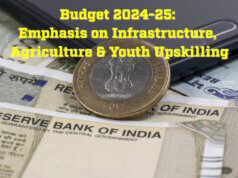 Bentel Associates, a joint venture between ICS Group, India, and Bentel Associates International, South Africa, offers a wide range of services like architectural design and development, master planning, interior and graphic design, and store planning. In his article, Sandip Sabnis discusses the catalytic role of housing and residential design in the overall development and growth of real estate sector.
Bentel Associates, a joint venture between ICS Group, India, and Bentel Associates International, South Africa, offers a wide range of services like architectural design and development, master planning, interior and graphic design, and store planning. In his article, Sandip Sabnis discusses the catalytic role of housing and residential design in the overall development and growth of real estate sector.
In recent times in India there has been a movement of population from rural areas to urban centres of industry, leading to price rise in property in various cities across the country.
Urban housing in India balances space constrictions and is aimed to serve the working class. Housing and residential design has thus become a catalyst in the overall development and growth of other sectors of real estate, and a very important faculty of architectural design.
In terms of volumes the residential design may look very repetitive in nature, but on the contrary is very sensitive to the user needs and demands a very practical approach to design.
Residential architecture is all about creating spaces that think or probably built on thoughts.
* To build homes, which will cater to the need of each individual of the family, working couples, housewives, kids, and elder people.
* To build communities where humans seek peace and abundance and also interact with each other for their overall social development and growth.
Various developments in urban areas will be focused on different visions depending on the geographic and demographic demands of the place, but the larger goal should be happiness of the inhabitants.
Considering the land pressures in the urban areas of new India, going vertical seems to be a more practical solution to achieve the built mass expected, still nurturing the greens. The trend of building heights has drastically changed in last decade and a half, and today we are seeing super tall buildings, thanks to the adaptation of the latest engineering technologies and soaring imagination of its designers.
The developers today seem to be in a fierce competition of exceeding each other’s offerings or amenities for the buyers. But the approach should be more sensitive about the community that is positioned in these developments, their fundamental spatial needs, affordability of property maintenance in the long run. Even as we are embracing a modern next gen world, in India the religious and the Vaastu aspect also plays an important role whilst one plans these multifamily neighbourhoods.
 Concept of Vaastu
Concept of Vaastu
Traditional Vaastu Shastra remains influential in India’s architecture during the contemporary era. Vaastu is an ancient mystical science somewhat like a body and soul. We can understand body better than we do soul, because body is a physical phenomenon while soul is mystical. Effects of Vaastu on life can be compared to a television set. If the antenna gets out of alignment, the reception is distorted, pictures blurred and sound jarring.
Similarly, life can get out of alignment when the basic five elements of universe fire, air, space, earth and water lose harmony within them causing the energy to get dissipated in wrong directions to cause stress, tension and poor peace of mind. Vaastu can help to redirect these energies and attain some equilibrium in life and also help to remove the blocks which are hampering the harmony and abundance we seek in life.
As described earlier, a bunch of people value Vaastu considerations to bring serenity and harmony into the stressful lives of today. This often can be more challenging for the designers, as not each house layout can be fully compliant with these sciences as the apartments have to be modular to be structurally more stable at the same time being cost effective. Customising each house arrangement to suit the Vaastu conditions can be extremely challenging and prove to be commercially unviable proposition.
Hence, the designers need to balance between their architectural imaginations, inhabitant’s needs, and their religious demands whilst being commercially viable, technologically sound and offering the optimum floor space to the developers for sale/lease too.
While these constraints are global on the residential developments in India, other important aspect is varied building bye laws and guidelines across the country, some more stringent while others more lenient. Due to the sheer magnitude of our land and the diversity in region specific cultures, demands and norms – there may not be a universal solution to the residential architecture in India.
The architects have to continually evolve, thrive for a constant quest and abide by a commitment in order to provide a vision to each unique project which will enhance the quality of life – serene and content.
“My passion and great enjoyment for architecture, and the reason the older I get the more I enjoy it, is because I believe we – architects can affect the quality of life of people.” – Richard Rogers











